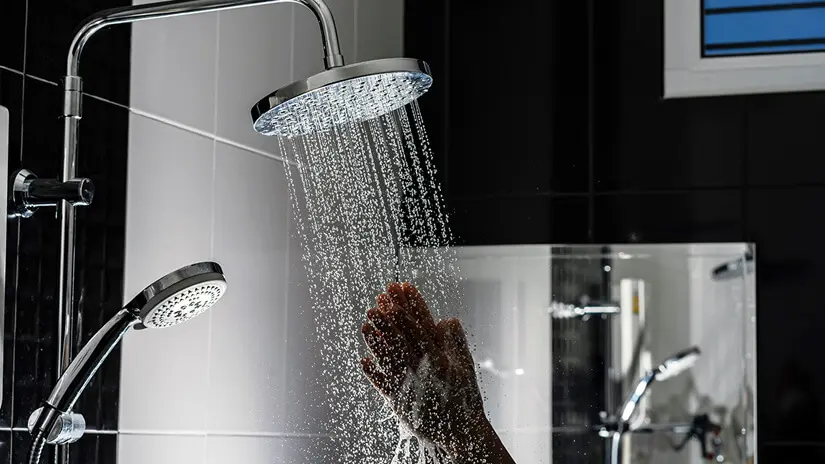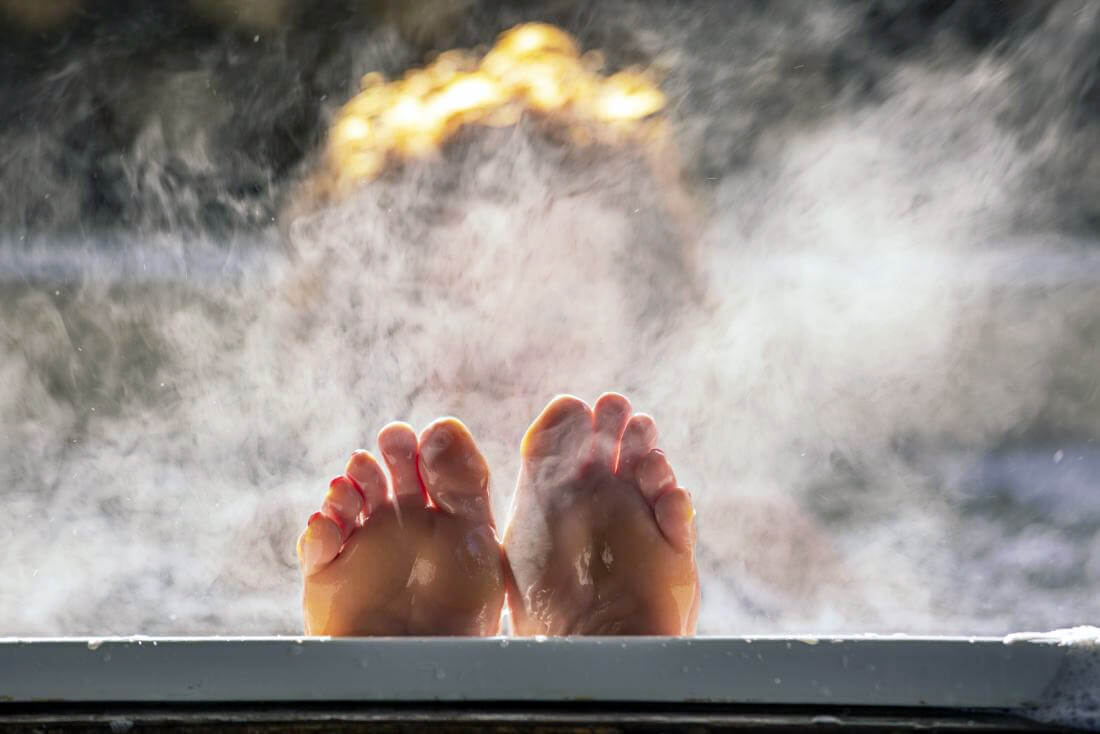When you turn on the shower taps, you expect hot water to come out of the showerhead. Nothing is more frustrating than waiting a long time for a shower to heat up or trying to have a relaxing hot shower and suddenly being hit by cold water pressure.
There are many shower parts , including the drain, faucet, taps and pipelines. The water pipes and fixtures in your property are all connected. Sometimes, when someone uses another tap in your kitchen or laundry or even flushes the toilet, you may experience a loss of heating in your shower.

This happens because the hot water tank and the water pipes are working at the same time.
It is essential to know how your plumbing system works. Pipes carry water through different channels that all originate from one big pipe. This is connected to the hot water heater and other pipes that use various fixtures such as taps, toilets and sinks.
Hot water pumps continuously throughout your home. So, if you turn on the kitchen tap while someone’s showering, the hot water suddenly diverts, leaving the shower cold for a moment. It goes the other way round, too!
Need a Plumbing Service?
How Do You Keep Water Hot When Someone Turns On A Tap?
You can make a few adjustments to your house’s plumbing system to preserve heat and pressure when you shower.
Water Efficient Taps
You can install a water-efficient tap set in your bathroom. The function of the water-efficient faucet is to slow down the speed of water travelling through your household pipes.
You may not want to replace the taps in your shower, so you can have an aerator fitted instead. An aerator is an attachment on the tip of the tap head. It adds air to the water stream, limiting the flow of the hot water system through the faucet.
Water-Saving Showerhead
A water-saving shower head works similarly to a water-efficient faucet system. It reduces the pressure of water through air bubbles. It is attached to the top of the shower head and can be removed when needed.
Water-saving shower heads and faucets are an ideal plumbing solution, and they are relatively easy to achieve in your home. The most viable solution is the combination of regulated water pressure, which helps maintain running water temperature and look after the environment and your wallet.
Correct Pipework
A plumbing problem such as inconsistent hot and cold water temperatures can be due to incorrectly installed pipework, or the sizing may be insufficient for supply and demand. A licensed plumber can check the size and condition of the piping.
Only Use One Fixture At A Time
The easiest and most cost-effective way to ensure you don’t lose hot water when using the shower is to refrain from using multiple faucets or toilets simultaneously.
It may sound simple enough, but it is the most effective method to prevent heat from escaping a fixture, such as a showerhead.
Why Does My Shower Lose Hot Water?
No matter if you’re cooking or scrubbing up in the bathroom, water temperature hassles are bound to pop up. But don’t worry—they’re usually pretty simple to fix.
The issue might be caused by more than one thing—often, it’s a mix of several. Troubleshooting is your first step to getting the water flowing smoothly again at home.

No Hot Water In Your Shower
If your other fixtures work fine but your showerhead is acting up, the problem might be there. Check the shower mixing valve, a worn washer, or the O-ring. If needed, replace the faulty cartridge to get it back in working order.
The problem could also be further down in the line. Inspect the pipework to ensure there is no leak or possible corrosion.
No Hot Water Throughout The Property
Inspecting the hot water tank is worth checking if you are experiencing a loss of heated water throughout your house. Depending on the condition and the age of the unit, you could need a replacement.
The type and size of the current water heater may not be keeping up with the demand for the number of showers being taken. Check the piping and valve on the tank, as there may be a leak to fix.
The 8 Causes (And Fixes) Of Low Hot Water Pressure
Below are some common reasons you are experiencing a drop in water pressure. From finding the source, you can determine the appropriate steps to find the best solution for your water flow and heating issues.
Valves
A tempering valve is a safety mechanism that prevents water from heating too much and causing severe burns. It regulates the temperature to a safe level. All valves need to be replaced periodically to prevent accidents. A plumber will help inspect the tempering valve’s condition and replace it with a new one.
Pipes
Blocked and cracked pipes are a significant cause of low water pressure. Many items and materials can get lodged between the hot and cold pipes, creating a barrier against water. A pipe and drain specialist can unclog the pipe system and repair rusted or blocked pipes.
Filter
A hot water system may have a filter that can get clogged with debris. These filters are found on the inlet and outlet valves. The water pressure will be affected if the filter is not regularly cleaned. Like any filter around your home, regular cleaning is required to ensure no blockages.
Leaks
Leaks can cause significant issues in household plumbing systems. If you are experiencing a leak in your hot water system tank, contact a plumber to get the correct part repaired or replaced. You may also encounter a leak in your pipes, preventing high-pressure hot water. To be fixed correctly, it is essential to determine where the leak is coming from.
Shower Head And Taps
Low pressure with hot water may be isolated to one fixture, like a bathroom tap or showerhead. Opening the fixture and replacing worn-out washers or O-rings is recommended. It will help if you clean the streaming hot shower head of any built-up debris. Older-style taps could have a water-saving device attached; however, you can remove that to increase the water pressure.
Sediment Inside Hot Water Tank
Over time, minerals and sediment can build up inside your water heating system. The longer you leave the unit in this condition, the worse the build-up is. Too much sediment and debris can create blockages and corrode the pipework and valves. A licensed plumbing team can flush out and service your water heater. An excellent internal cleaning will extend the life of the unit.
Installation
Correct installation of a water heater is crucial to the performance of the hot water supply. A licensed and experienced plumbing team will be able to install your hot water tank correctly and safely. If the piping and valves are not installed and connected correctly, the tank will not work. A professional water heater plumber will use the right tools and materials and inspect the unit to ensure it runs perfectly.
Hot Water Tank
Your water heater is the heart of your household’s hot water system. It controls both pressure and temperature. These tanks typically last about ten years. If yours is getting old, consider replacing it. A plumber can help you find the perfect fit, whether you prefer gas or electric. The right size and type of tank ensure you always have hot water.
Alternatively, if the unit is relatively new but is leaking or not performing at its best, repair work can be made to prolong its shelf life. A professional will know what will work.
Need a Plumbing Service?

Call A Plumber
You should contact a reputable plumbing company to determine the cause of low water pressure and temperature issues. The plumbing system in your home needs the proper care and attention that only an experienced team can provide. Schedule a regular maintenance check of your plumbing system. With the correct inspection, your water system problem will be sorted out, and you can run cold water in the home without interrupting showers. Let experienced professionals take care of it so you can have your hot and cold water running quickly!














